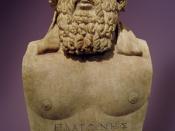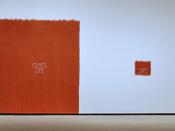Plato's theory of forms is strongly based on what is real and what is not. What is real is thought to be perfect, but something cannot be real or perfect if it is always changing. He explains that the "World of forms" is very different to the "World of appearances". The "World of forms" can only be properly understood by philosophers and those who seek knowledge, not by the ignorant or those who do not wish to learn the truth. The theory of forms makes a distinction between those objects that are real and those that are only real in our minds. His dialogues (e.g. Parable of the cave) portray knowledge as the process of leaving the cave and going into the sunlight. The people in the cave find their reality in the shadows cast in the cave and assume there can never be anything beyond these shadows.
These shadows symbolise how the world that we see is just a shadow or reflection of what is real. For Plato, the real world is not what we see around us, it is only the "World of forms" that is real and unchanging. This is also known as the " One and many". The "One" being the perfect "World of forms" and the "Many" being the imperfect "World of appearances"
Plato approach to the two different/ alternate world is know as dualism. The idea of dualism has had a major effect and has strongly influenced the development of philosophy. Another side to Plato's dualism is the belief in the separation of knowledge and opinion. We seek knowledge but really all we have is opinion. Plato realised the opinion is often mistaken for knowledge, for example, what may be beautiful for one person may be...


